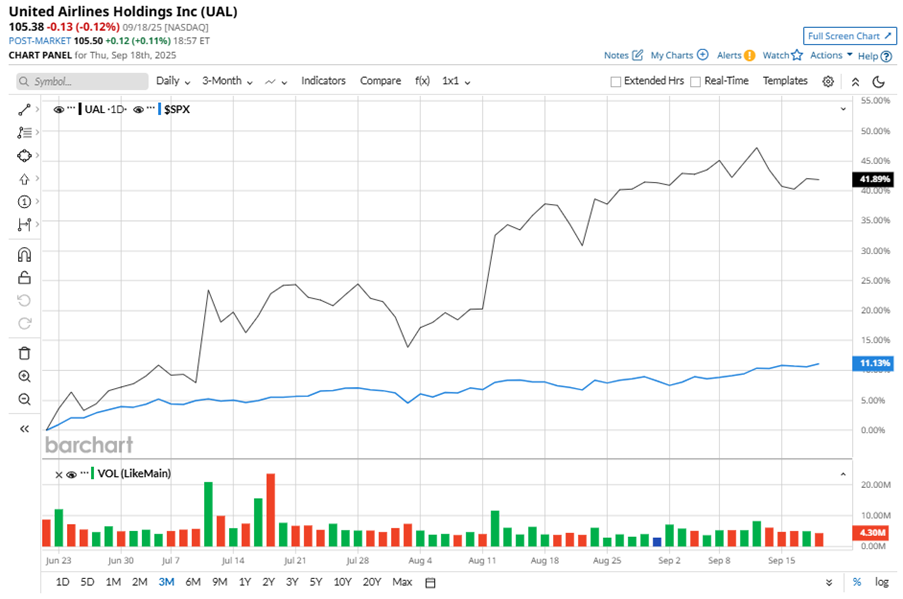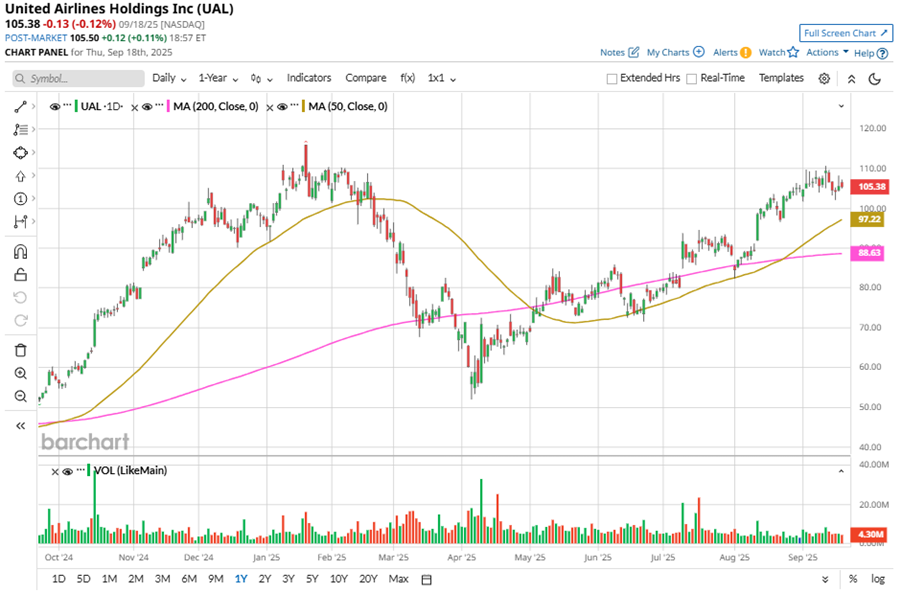/United%20Airlines%20Holdings%20Inc%20777%20plane-by%20Laser1987%20via%20Shutterstock.jpg)
Chicago, Illinois-based United Airlines Holdings, Inc. (UAL) owns and manages airlines that transport people and cargo, serving customers worldwide. With a market cap of $34.2 billion, the company also offers catering, ground handling, flight academy, and maintenance services to third parties.
Companies worth $10 billion or more are generally described as “large-cap stocks,” and UAL perfectly fits that description, with its market cap exceeding this mark, underscoring its size, influence, and dominance within the airlines industry. UAL's extensive route network, strategic hubs, and loyalty program drive its competitive edge in global aviation, facilitating high-volume international and long-haul flights. The hub-and-spoke system boosts efficiency, while its MileagePlus program and partner agreements generate significant ancillary revenue.
Despite its notable strength, UAL slipped 9.2% from its 52-week high of $116, achieved on Jan. 22. Over the past three months, UAL stock has gained 41.8%, considerably outperforming the S&P 500 Index’s ($SPX) 10.9% gains during the same time frame.

In the longer term, shares of UAL rose 8.5% on a YTD basis, underperforming SPX’s YTD gains of 12.8%. However, UAL climbed 99% over the past 52 weeks, significantly outperforming SPX’s 18% returns during the same time frame.
To confirm the bullish trend, UAL has been trading above its 50-day and 200-day moving averages since early May, with some fluctuations.

United Airlines' outperformance is driven by a positive shift in demand since early July, with a six-point acceleration in booking demand, and another industry supply inflection in mid-August. With expectations of reduced geopolitical and macroeconomic uncertainty in the second half of 2025, UAL remains optimistic due to strong travel demand, improving booking trends, and healthy growth in premium cabin and loyalty revenues.
On Jul. 16, UAL shares closed up more than 2% after reporting its Q2 results. Its adjusted EPS of $3.87 surpassed the consensus estimate by a penny. The company’s revenue was $15.2 billion, falling short of the consensus estimate of $15.4 billion.
UAL’s rival, Delta Air Lines, Inc. (DAL) has lagged behind the stock with a 1.7% loss on a YTD basis and a 26.8% uptick over the past 52 weeks.
Wall Street analysts are bullish on UAL’s prospects. The stock has a consensus “Strong Buy” rating from the 22 analysts covering it, and the mean price target of $114.05 suggests a potential upside of 8.2% from current price levels.
On the date of publication, Neha Panjwani did not have (either directly or indirectly) positions in any of the securities mentioned in this article. All information and data in this article is solely for informational purposes. For more information please view the Barchart Disclosure Policy here.






